Hue, the former imperial capital of Vietnam, is not just known for its rich history and architecture; it is also renowned for its culinary heritage. This enchanting city boasts a range of unique dishes that reflect the intricate fusion of royal cuisine and local flavors. When you step into the bustling streets of Hue, you'll be greeted by a vibrant tapestry of culinary experiences, each inextricably linked to the region’s customs and traditions. From bustling street stalls offering savory bites to elegant restaurants presenting refined local dishes, Hue’s food scene is a delicious exploration of texture, aroma, and taste that promises to leave a lasting impression on your palate.
Central to Hue's culinary identity is the philosophy of creating dishes that delight not only the taste buds but also the senses. The city's cuisine embodies a rich history of imperial practices, where culinary skills reached the heights of sophistication. The balance of flavors, colors, and textures tells a story of a city that has nourished its people through centuries. Thus, venturing into Hue's local food offerings is both a gastronomic journey and a vibrant cultural experience, with each dish acting as a reflection of the city's rich past and hopeful future.
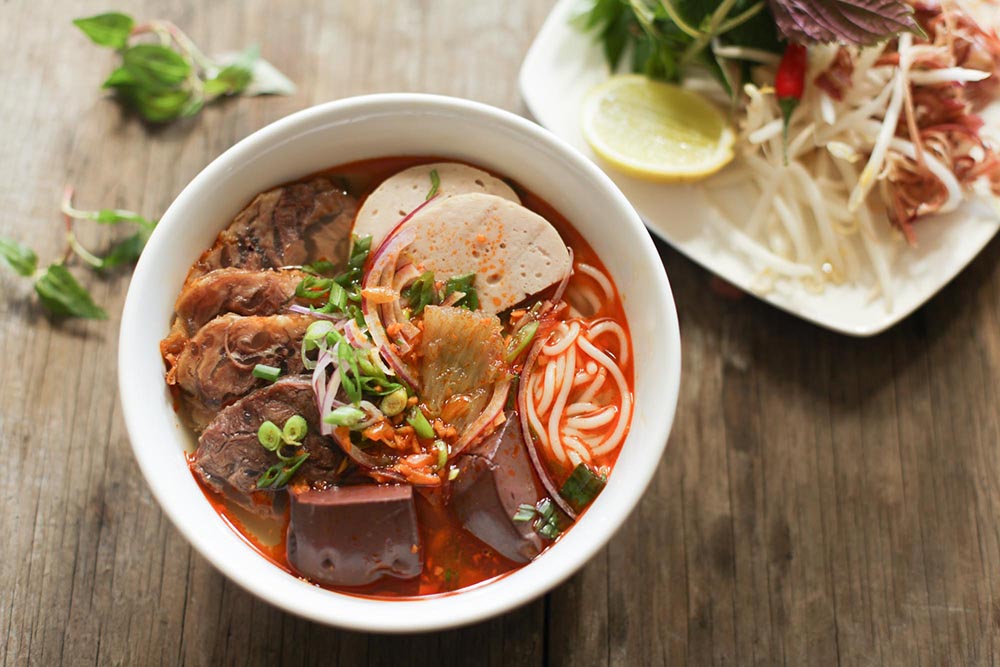
The culinary landscape of Hue is characterized by a collection of iconic dishes that showcase the city's rich flavors and cultural significance. Each dish intertwines local ingredients, traditional cooking techniques, and an essence of Hue’s history, making them worthy of exploration. The most famous offerings include Bun Bo Hue, a hearty beef noodle soup known for its spicy and aromatic broth; Com Hen, a clam rice dish that epitomizes the region’s ability to elevate humble ingredients; Banh Beo, delectable steamed rice cakes; and Banh Khoai, crispy pancakes that serve as a popular street food.
These iconic dishes each carry a unique story reflecting the culinary identity of Hue, shaped by history, local customs, and the blend of flavors that characterize Vietnamese cuisine. For example, while Bun Bo Hue captivates with its rich spices and beefy goodness, Com Hen illustrates the creativity in utilizing locally sourced seafood. The art of preparing these dishes is not merely about satisfying hunger; it encapsulates a tradition of sharing, health, and celebration. As we delve deeper into each dish, we uncover the rich tapestry of flavors and stories that define the heart and soul of Hue’s cuisine.
Bun Bo Hue is perhaps the most emblematic dish of Hue's culinary repertoire. Unlike its more internationally known counterpart, Pho, this unique noodle soup delivers a profoundly different flavor experience. The dish features a base of robust beef broth simmered with lemongrass, chili, and a symphony of spices that create a savory and aromatic profile. Diners can often feel the gentle warmth of the spicy broth inviting them to take their first spoonful, a delightful prelude to the heartiness awaiting them in the bowl.
Typically served with thick rice vermicelli noodles, the dish is a kaleidoscope of textures and flavors with each bite. Tender slices of beef and rich pork shank are crucial elements, often garnished with a vibrant array of fresh herbs cilantro, mint, and various greens. This herbaceous flair not only enhances the flavor but also adds a refreshing aspect to the hearty broth. Diners can further customize their experience, squeezing in lime juice or dousing their bowl with chili for an extra kick.
| Bun Bo Hue Characteristics | Description |
|---|---|
| Broth | Spicy, aromatic, made with beef bones and lemongrass |
| Noodles | Thick rice vermicelli |
| Meat | Tender beef slices, pork shank |
| Garnishes | Fresh herbs (cilantro, mint), lime, chili |
Bun Bo Hue is not just a dish; it is a cultural experience. Historically served as breakfast, it has evolved into a versatile meal enjoyed at any time of the day. The markets and street-side eateries in Hue create an authentic atmosphere where locals gather to enjoy this beloved dish. Each bowl is a testament to the city's identity robust, flavorful, and layered with stories of tradition. To truly appreciate Bun Bo Hue, one must immerse themselves in the vibrant streets where the aromas waft through the air and entice food lovers from all walks of life.
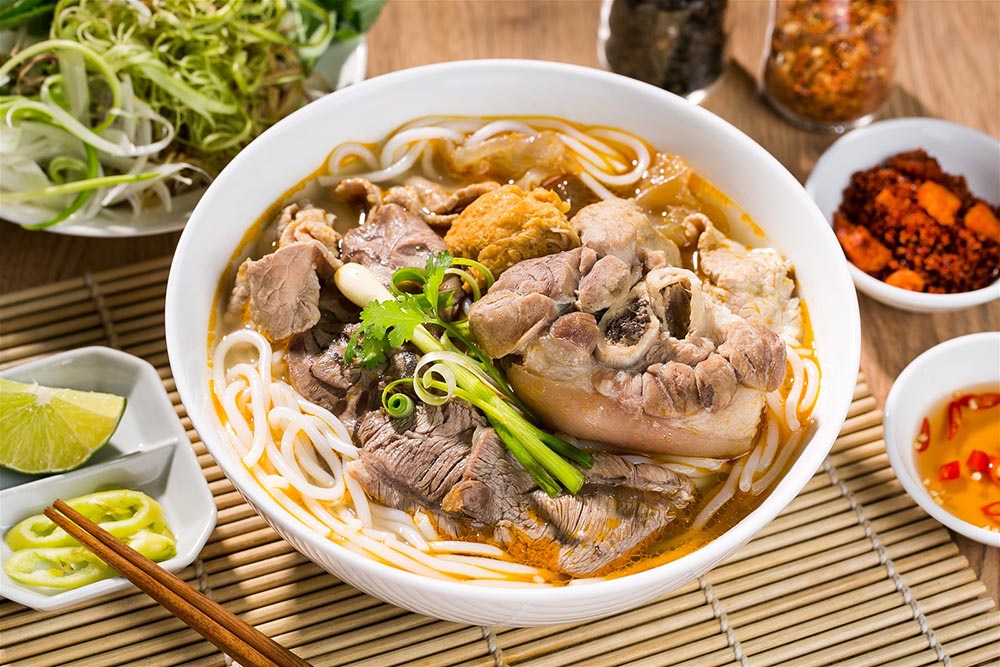
Another quintessential delicacy of Hue is Com Hen, or clam rice, which epitomizes the city's ingenuity in turning ordinary ingredients into a delightful feast. This dish emerged from humble beginnings as a peasant's meal, making use of leftover rice and readily available clams from the riverbanks. Over time, Com Hen has evolved into a celebrated specialty that showcases the complexity and harmony of flavors prevalent in Hue cuisine.
Com Hen typically consists of cold rice combined with stir-fried baby clams, making for a beautiful medley of textures. To enhance the experience, it is often served with a unique clam broth poured generously over the dish, enriching the flavors of the rice and clams. A splash of broth transforms the dish into a comforting and savory delight. The vibrant presentation of Com Hen showcases a variety of ingredients, including crispy fried pork skin, roasted peanuts, chili peppers, and fresh herbs like Vietnamese coriander and mint, creating an enticing visual appeal.
| Com Hen Ingredients | Description |
|---|---|
| Rice | Cold, steamed rice that serves as a base |
| Clams | Stir-fried baby clams mixed into the rice |
| Toppings | Fried pork skin, roasted peanuts, chili peppers, fresh herbs |
The careful combination of salty, spicy, and nutty flavors in Com Hen embodies the essence of Hue's culinary philosophy. Diners enjoy the rich tapestry of sensations as they explore each component, encountering hints of sweetness from the herbs and a crunch from the pork skin and peanuts. As locals often indulge in this dish for breakfast or a light lunch, Com Hen stands as a reminder of how simple ingredients can transcend their origins to create something exquisite and culturally significant.
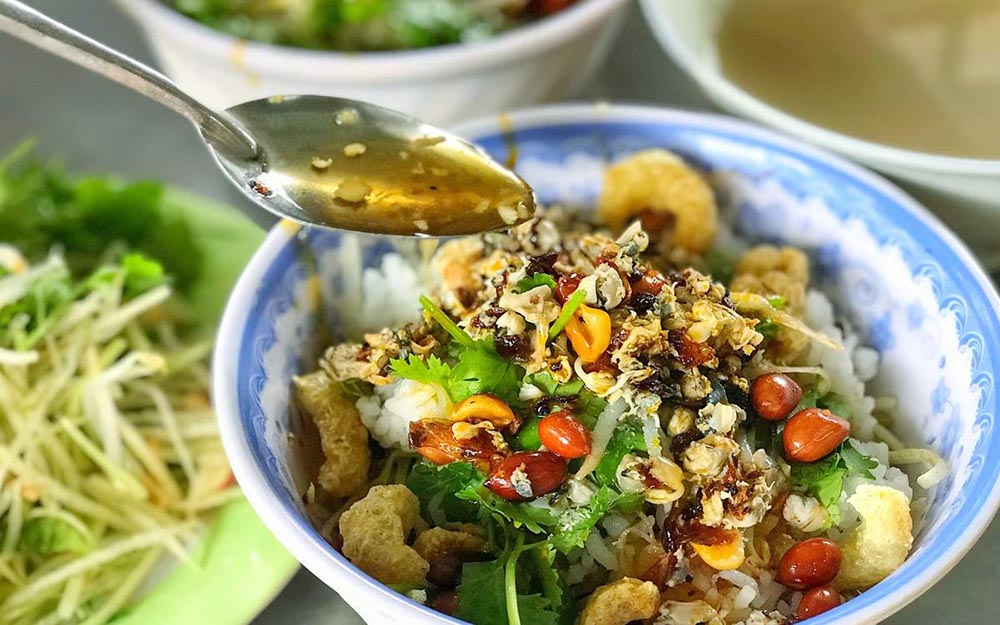
Banh Beo are delicate steamed rice cakes that embody the balance and finesse of Hue's culinary heritage. These small, round cakes are lovingly crafted from a mixture of rice flour and water, often with a hint of tapioca starch to provide a chewy, translucent texture. Steamed to perfection in small little dishes, Banh Beo are served hot, often topped with a delightful combination of savory ingredients.
Traditionally, these cakes are adorned with minced shrimp, crispy pork skin, and green onions, creating an intricate combination of flavors and textures in every bite. The soft, gelatinous surface of the rice cake contrasts beautifully with the crunchy toppings. To enhance the experience further, Banh Beo usually comes with a side of sweet and spicy fish sauce for dipping, adding a layer of umami that elevates the dish to another level.
| Banh Beo Characteristics | Description |
|---|---|
| Texture | Soft, gelatinous, chewy |
| Toppings | Minced shrimp, crispy pork skin, green onions |
| Dipping Sauce | Sweet and spicy fish sauce |
The presentation of Banh Beo is as captivating as its taste. Often served on small platters that showcase their round shapes, the dish paints a picture of simplicity adorned with complexity. Banh Beo captures the heart of Hue cuisine, where every element is thoughtfully crafted, and where freshness and quality are paramount. It serves as the perfect appetizer or snack enjoyed by both locals and tourists eager to immerse themselves in the culinary wonders of this historic city.
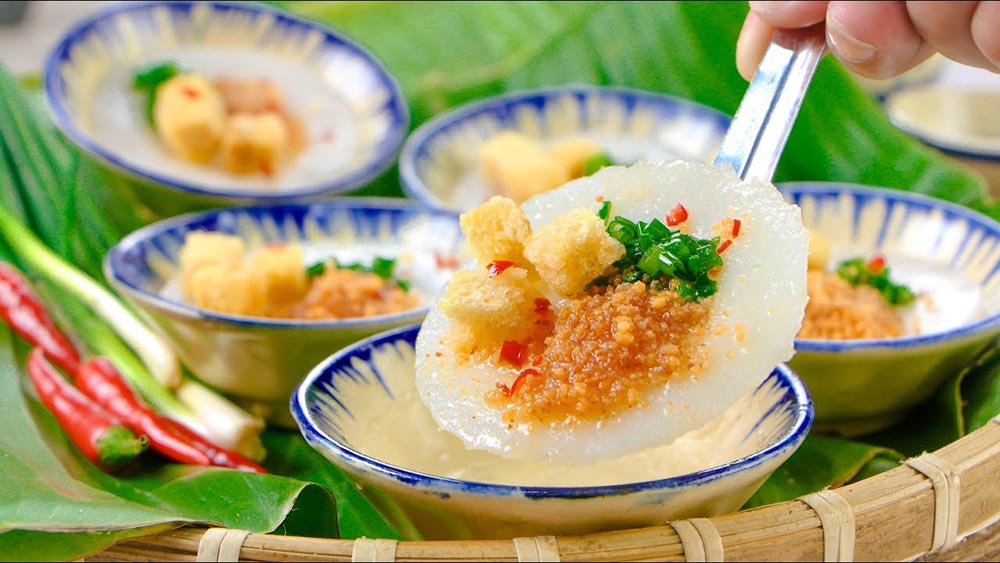
Banh Khoai hold a special place in Hue’s culinary scene, often referred to as Hue pancakes, offering a delightful twist on the more widely recognized bánh xèo of southern Vietnam. These pancakes are defined by their distinctive, crunchy texture and vibrant yellow color, achieved by mixing rice flour with turmeric, which not only adds to the visual appeal but also contributes to the flavor.
Unlike traditional Vietnamese pancakes, Banh Khoai are significantly thicker and fried to perfection, yielding a crispy exterior that encloses a generous filling of sautéed shrimp, pork belly, and bean sprouts. The explosion of flavors upon taking the first bite is nothing short of mesmerizing. The aromatic garlic used in the cooking process elevates the taste, leaving diners craving more after each mouthful.
| Banh Khoai Features | Description |
|---|---|
| Texture | Crunchy outside, soft inside |
| Main Ingredients | Shrimp, pork belly, bean sprouts |
| Dipping Sauce | Hoisin-based sauce with sweet and nutty flavor |
Traditionally served with an array of fresh vegetables and herbs, like lettuce and mint, the eating experience of Banh Khoai is as much about the assembly as it is about the taste. Diners often wrap the pancakes in lettuce leaves along with various herbs, creating a burst of freshness that expertly balances the savory filling. The accompanying hoisin-based dipping sauce plays a significant role, providing a sweet, nutty complement to the rich savory flavors of the pancake.
Whether enjoyed as a quick street food or in a more formal dining setting, Banh Khoai represents the essence of Hue's cuisine the blend of simplicity with sophistication, tradition with innovation. The dish invites diners to engage in the experience, crafting each bite with personal touches that only amplify the joy of eating.
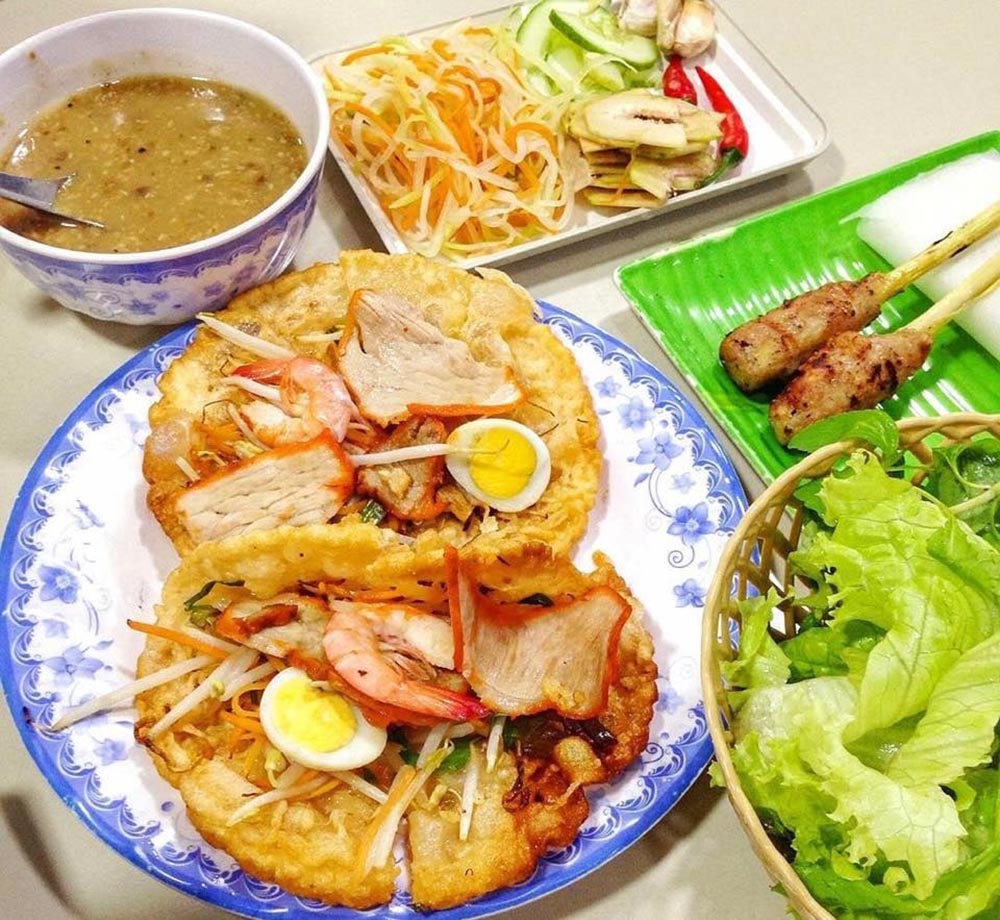
The culinary characteristics of Hue are deeply influenced by the region's rich history and its royal heritage. As the former capital of Vietnam, Hue has a reputation for sophisticated dishes that were historically reserved for emperors and local nobility. These culinary practices have trickled down to today's diners, creating a rich tapestry of flavors and textures.
One defining feature of Hue's cuisine is balance. This concept can be witnessed in the complementary flavors at play spicy, savory, sweet, and sour all harmoniously coexist within each dish. Fresh herbs play a foundational role in this balance, contributing depth and aroma that elevate even the simplest of ingredients.
Furthermore, the use of high-quality ingredients, such as An Cuu rice, which is considered highly fragrant and ideal for steamed preparations, and the meticulous preparation techniques reflect a commitment to culinary excellence. The dishes not only satisfy hunger but also provide a sense of health through the careful selection of herbs, proteins, and grains used in preparation. This dedication to quality and balance is what makes Hue's food culture distinctive.
The flavors of Hue are intricately woven into the fabric of its traditional ingredients, each playing a vital role in creating the iconic dishes synonymous with the city. One of the standout ingredients is An Cuu rice, renowned for its aroma and texture. This rice, often used in various preparations especially in dishes such as Com Hen serves as the perfect base to carry the flavors of accompanying ingredients.
In addition to rice, fresh herbs are quintessential to Hue's flavor profile. Herbs like Thai basil, cilantro, and mint not only contribute fragrance but also add complexity and freshness to the dishes. These herbs are often featured prominently in meals to create a vibrant color palette that visually entices diners.
Another notable ingredient is local seafood, particularly clams, found in many regional specialties, including Com Hen. The proximity to water bodies enables easy access to fresh seafood, which enhances the flavors of Hue’s dishes, further connecting them to the land and water that nourish the region.
| Key Traditional Ingredients | Description |
|---|---|
| An Cuu Rice | Fragrant, high-quality rice |
| Fresh Herbs | Thai basil, cilantro, mint |
| Local Seafood | Clams and other fresh catch |
Additionally, the incorporation of unique flavors such as lemongrass, turmeric, and a plethora of spices captures the essence of Hue cuisine. These ingredients are not only common in savory dishes but are also essential in crafting sauces that enhance the depth of flavors, demonstrating a connection between the geographical bounty and the culinary artistry found in Hue's kitchen.
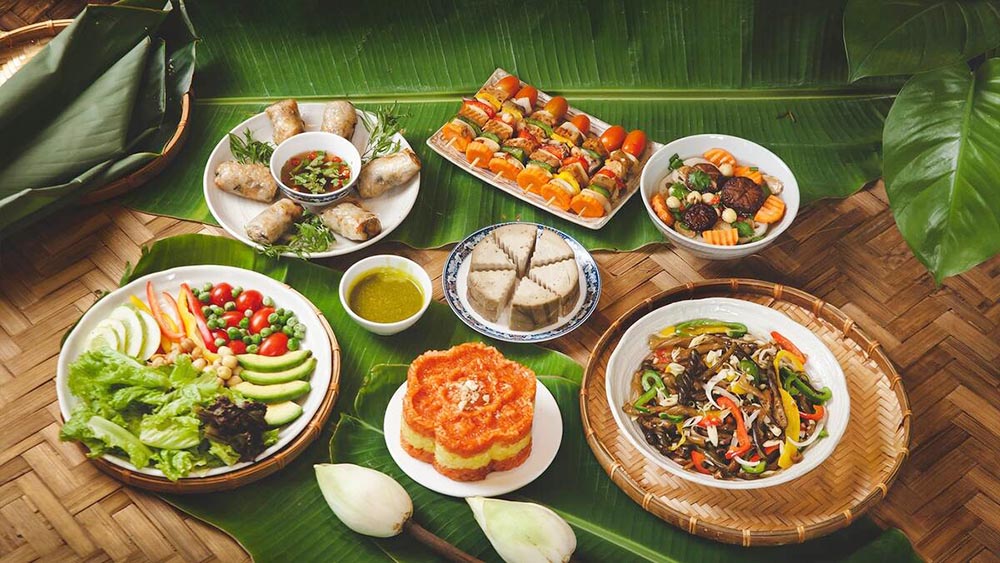
The roots of Hue's culinary landscape are deeply connected to its historical status as the seat of the Nguyen Dynasty, where royal cuisine characterized by sophistication and elegance flourished. Influenced by imperial customs, the cooking techniques and presentation of dishes in Hue reflect a commitment to quality, variety, and artistry, making them distinctly different from other regional culinary practices in Vietnam.
Royal cuisine emphasized not just the taste but also the visual aesthetics of each meal. Elaborate plating and the use of seasonal, high-quality ingredients were commonplace in royal banquets, setting a standard that permeated local cooking styles. Even today, local dishes such as Bun Bo Hue and Banh Beo continue to exhibit traces of this sophistication while remaining firmly rooted in local traditions.
Moreover, the use of particular ingredients like lotus seeds, dried longan, and gourmet vegetable garnishes originally reserved for royal tables have become more widespread in Hue's culinary repertoire, allowing locals and visitors alike to experience a taste of imperial history.
| Aspects of Royal Cuisine | Description |
|---|---|
| Presentation | Elaborate and artistically arranged |
| Ingredients | High-quality, seasonal, and local |
| Cooking Techniques | Meticulous preparation for authenticity |
Even desserts like Che Hue reflect this royal influence, with different layers of textures and unique flavors tailored to please the palate. While many dishes in Hue offer a taste of history, they also promote a sense of shared identity among locals, showcasing how the past continues to influence modern gastronomy in the region.
The street food scene in Hue is nothing short of vibrant, characterized by an abundance of flavors and cultural significance. Street food represents a crucial part of everyday life in Hue, where locals gather to share meals, converse, and celebrate the essence of community through food. Each dish reflects not just culinary prowess, but also the spirit and history of a city that takes pride in its heritage.
Among the most cherished street foods is Banh Mi, a Vietnamese sandwich that embodies the intricate flavors of Hue. This delightful creation features a crusty baguette filled with a medley of ingredients unique to the city, providing a quick yet satisfying meal. The use of fresh produce, meats, and locally inspired condiments renders Banh Mi a must-try for anyone visiting.
Other popular street foods include Nem Lui, grilled lemongrass skewers that captivate taste buds with their aromatic flavors and Che Hem, an array of sweet soups showcasing a wide variety of textures and colors. These street foods not only satisfy hunger but also tell a story of cultural exchange, tradition, and the art of culinary expression that defines Hue.
The Banh Mi in Hue stands out among Vietnam's iconic sandwiches, offering a unique local spin that showcases the city's culinary tradition. The foundation of this beloved street food is a crispy baguette, whose exterior crackles delightfully, giving way to the warmth and softness within. This contrast sets the stage for the layer of flavors that follows.
While traditional Banh Mi typically features grilled pork or chicken, the Hue variation often incorporates local specialties. Diners can relish fillings such as shredded pork, pickled vegetables, and distinctive condiments that elevate the overall experience. The addition of spicy chili sauce results in an explosion of flavor, making it a favorite among both locals and travelers.
| Banh Mi Characteristics | Description |
|---|---|
| Baguette | Crispy, flaky exterior |
| Fillings | Shredded pork, pickled vegetables |
| Condiments | Local sauces, spicy chili |
Enjoying a Banh Mi typically involves visiting one of the many street stalls adorned with colorful signage, where locals passionately assemble sandwiches according to customer preferences. The fresh herbs and vegetables are often sourced from nearby markets, underscoring the connection between the region and its food. Each bite of a Huế Banh Mi tells a story layered with tradition, authenticity, and the rich culinary identity of the city.
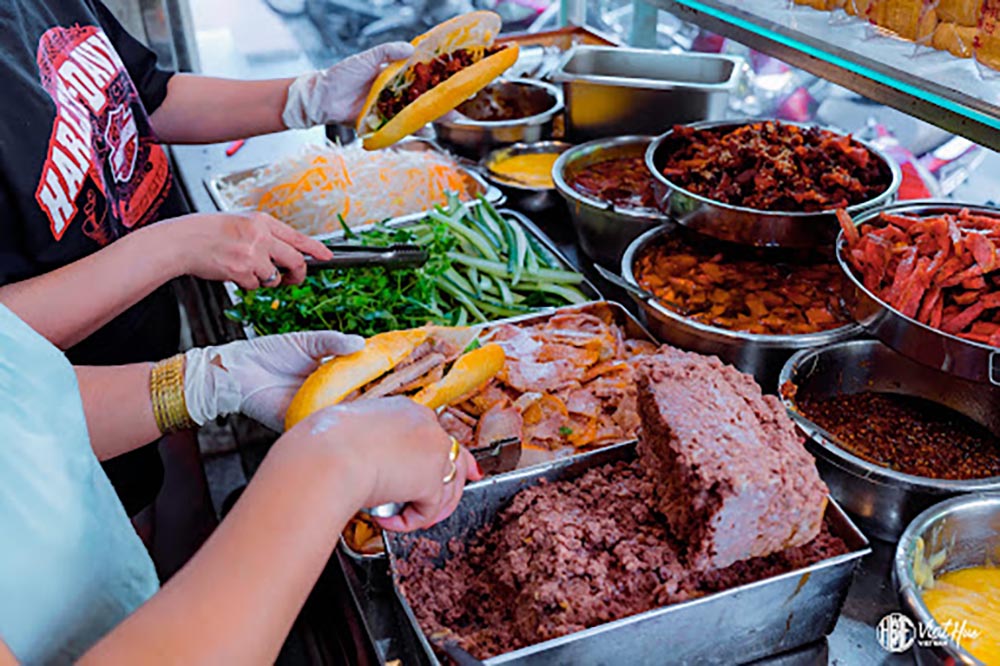
Nem Lui, or grilled lemongrass skewers, is a classic street food delight that encapsulates the essence of Hue's vibrant culinary scene. This dish is defined by the use of fermented pork that is lovingly shaped around stalks of lemongrass, infusing the meat with aromatic flavors that dance across the palate.
Grilled over charcoal, the skewers develop a beautifully charred exterior while maintaining a juicy interior. The intense aroma of lemongrass wafts through the air as they sizzle on the grill, making it nearly impossible to resist the enticing allure of Nem Lui. The dish is often served alongside fresh herbs, rice paper, and a rich dipping sauce that combines pig liver, fish sauce, sugar, and an array of spices, allowing diners to wrap their own fresh spring rolls with ease.
| Nem Lui Features | Description |
|---|---|
| Meat | Fermented pork grilled on lemongrass |
| Serving Style | Accompanied by herbs, rice paper |
| Dipping Sauce | Rich, savory, with pig liver and spices |
Consuming Nem Lui is an interactive experience. Assembling your own fresh spring rolls fosters a sense of community, as diners share the flavors while engaging in the ritual of preparing their meals. The delicate balance between the aromatic meat and the freshness of the herbs makes Nem Lui a must-try for visitors eager to explore Hue’s street food landscape.
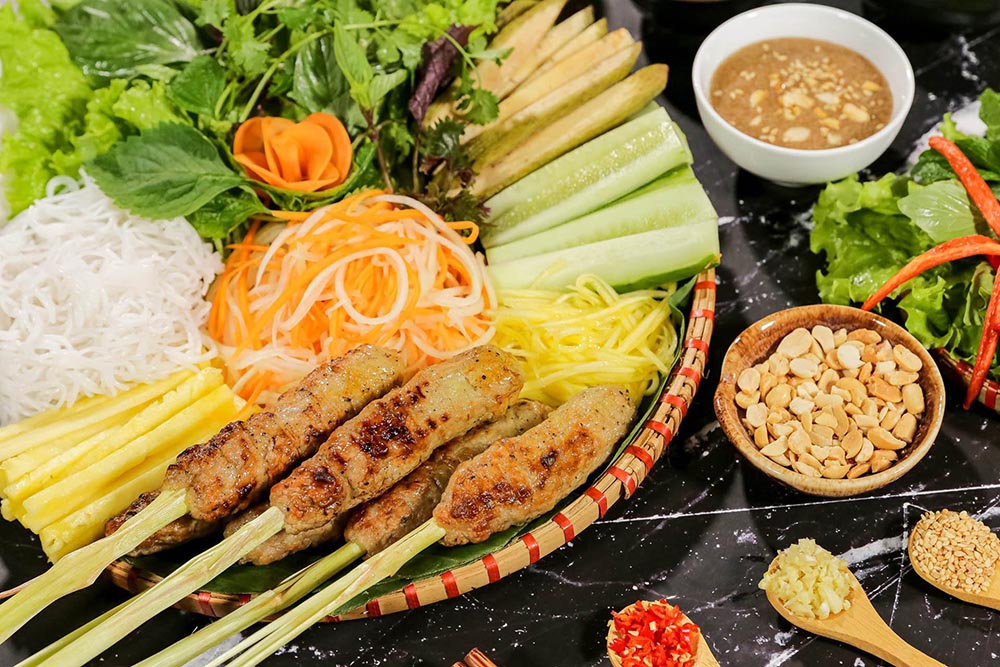
Che Hem translates to "sweet soup" and embodies Hue's reputation for diverse dessert options, featuring a delightful array of over 36 different kinds of sweet soups. This dessert captures the essence of Hue’s culinary artistry while showcasing the region's incredible variety and culinary creativity. Each bowl reflects the colorful tapestry of flavors, ensuring no two experiences are ever the same.
Common ingredients in Che Hem include green beans, lotus seeds, coconut milk, and various seasonal fruits, all cooked into a sweet, flavorful mixture. These soups are thoughtfully crafted, each variation offering unique textures and presentations, and they are often served in small bowls that invite exploration.
| Che Hem Features | Description |
|---|---|
| Base | Variety of beans, fruits, coconut milk |
| Texture | Creamy, sweet, and flavorful |
| Presentation | Colorful, served in small bowls |
One of the most renowned shops for Che Hem is located at 27 Hung Vuong Street, where traditional recipes have been lovingly maintained since 1985. These sweet soups not only tantalize the taste buds but also tell the story of Hue’s culture, revealing how this city transforms simple ingredients into luscious, comforting treats that appeal to all ages.
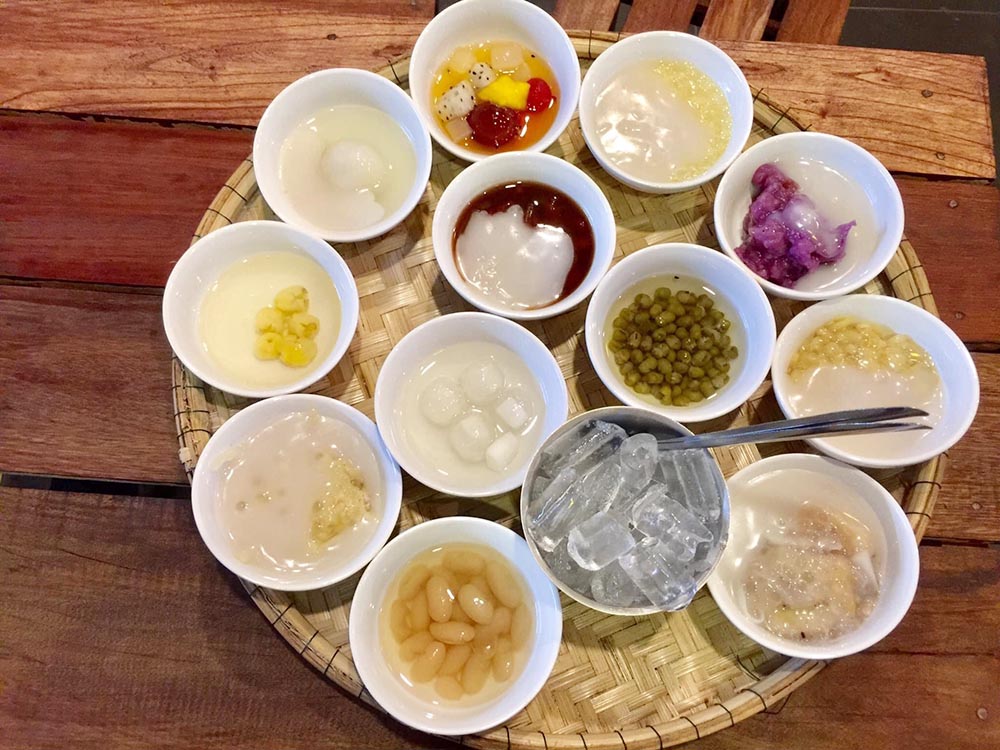
Hue’s rich cultural heritage is reflected not only in its savory dishes but also in its offerings for vegetarians. The influence of Buddhism in the region has nurtured a vibrant vegetarian food culture that caters to those looking for plant-based meals. Many restaurants and local eateries showcase a variety of meatless options, ensuring that everyone can experience the culinary delights that Hue has to offer.
The abundance of fresh vegetables and herbs in the region, combined with traditional cooking techniques, means that vegetarian dishes are both flavorful and satisfying. Dishes such as Banh Khoai Chay, Com Chay, Banh Beo in vegetarian versions, and numerous noodle soups exemplify how plant-based ingredients can shine in Hue's culinary scene.
The foundational principles of Buddhism significantly shape the vegetarian landscape in Hue. Many Buddhist families adhere to the tradition of consuming vegetarian meals on specific lunar days, leading to an impressive array of flavors and ingredients that celebrate plant-based cuisine. This cultural emphasis on vegetarianism has inspired numerous local restaurants to cater to both vegetarians and those curious about meat-free options.
Popular dishes include Banh Khoai Chay, a vegetable-filled version of the beloved crispy pancake, served with fresh herbs and a tangy dipping sauce. Com Chay features rice accompanied by an array of vibrant vegetables, showcasing the abundance of local produce. Even traditionally meaty dishes like Banh Beo are adapted into vegetarian options, with ingredients like mushrooms cleverly substituting for meat.
| Popular Vegetarian Dishes | Description |
|---|---|
| Banh Khoai Chay | Crispy pancakes filled with vegetables |
| Com Chay | Rice paired with various vegetables |
| Vegetarian Noodle Soups | Rich broths crafted from vegetable ingredients |
This flourishing vegetarian scene reflects not only the local preference for healthy and sustainable eating but also serves as an invitation for visitors to explore a different side of Hue's culinary traditions. Those seeking delicious plant-based meals will find that Hue is not only a center for imperial cuisine but also a vibrant hub for vegetarian delights.
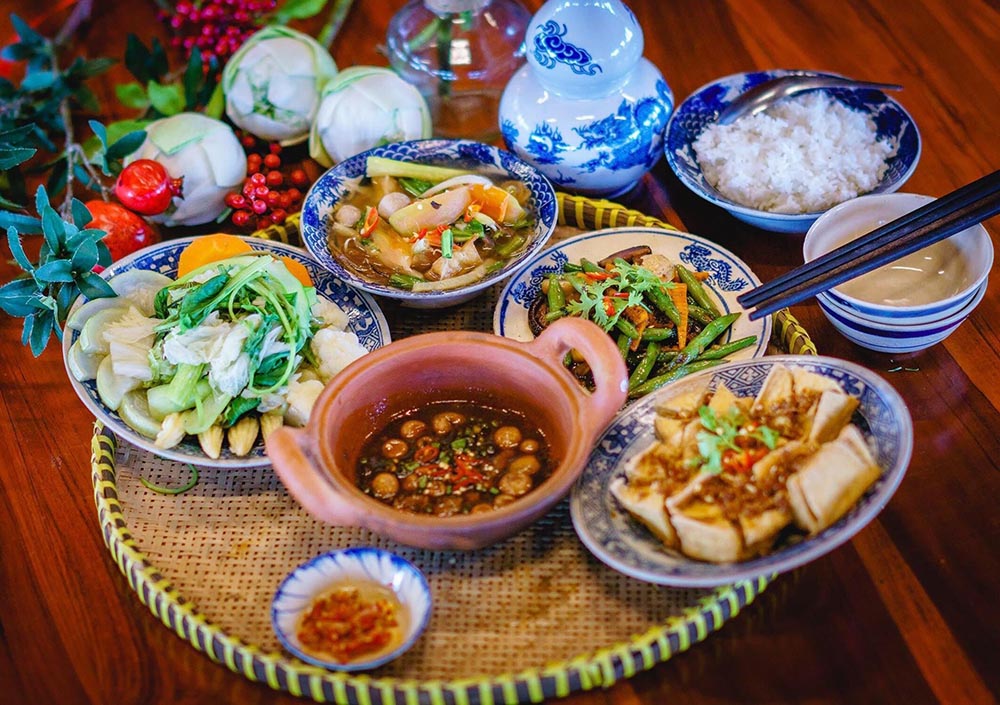
Hue is home to numerous vegetarian restaurants, each offering a plethora of dishes that highlight the strength and diversity of plant-based cuisine in the region. In recent years, these establishments have gained popularity, attracting both locals and tourists alike.
Lien Hoa Vegetarian Restaurant: A well-known eatery featuring an extensive menu with up to 150 vegetarian and vegan dishes. The rustic environment is surrounded by tropical gardens, with prices ranging from 15,000 to 50,000 VND per dish, making it affordable for everyone.
An Nhien Garden Vegetarian: Located in a serene garden setting, An Nhien emphasizes healthy, visually appealing vegetarian meals. Prices range between 75,000 and 400,000 VND, reflecting the care taken in ingredient selection and presentation.
San May Vegetarian Restaurant: This venue boasts traditional architecture and a tranquil atmosphere, featuring a seasonal vegan menu with standout plates like braised mushrooms and tofu. With prices ranging from 10,000 to 265,000 VND, it promises a satisfying dining experience.
Dieu Lac Vegetarian Restaurant: Combining Vietnamese and Korean influences, this restaurant is known for dishes such as crispy spring rolls and kimchi. Attractively priced from 10,000 to 70,000 VND, it remains a favorite among locals and travelers.
The growing trend toward vegetarian eating in Hue enhances the culinary experience and adds to the city's historical and cultural richness. Whether it’s adapting traditional dishes in vegetarian ways or offering new creations, the landscape of plant-based dining in Hue is vibrant and exciting.
What is Bun Bo Hue?
Where can I try authentic Com Hen in Hue?
What are some popular vegetarian dishes in Hue?
What makes Hue's street food unique?
What is Che Hem?
Hue, Vietnam, serves as a magnificent culinary tapestry where history, culture, and flavor converge spectacularly. The local dishes and street food reflect the deep-rooted traditions and the vibrant spirit of the city, making it a gastronomic paradise or a food lover's dream. Each dish, from the sensual depth of Bun Bo Hue to the delightful freshness of Com Hen, tells its own story while inviting diners to experience the artistry of cooking deeply ingrained in local culture.
Moreover, the burgeoning vegetarian scene showcases Hue's ability to cater to a diverse array of culinary preferences, illustrating the city’s commitment to health, sustainability, and innovation. Every corner of Hue’s bustling food landscape offers a unique opportunity to celebrate the flavors of the region, making it an essential destination for anyone seeking to explore not just Vietnamese cuisine but the heart and soul of this historical city. Whether you are a seasoned foodie or a curious traveler, the culinary journey through Hue awaits, promising unforgettable experiences and delightful flavors at every turn.